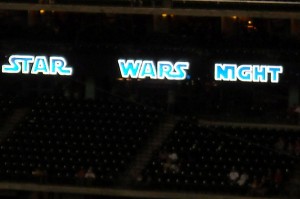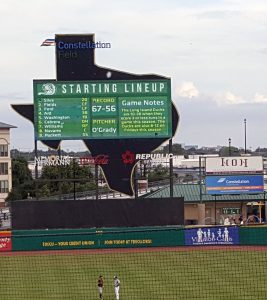It can be argued that tomorrow, June 15, 2023, marks the 35th anniversary of one of the most pivotal days in shaping who I would become.
While there were many days of triumph and tragedy that contributed to the mosaic of my life, it is not hyperbole to say that the release of the movie “Bull Durham” not only shaped many of the words I use in conversation, but it also set me on a Don Quixote like quest to land a dream job working in Minor League Baseball.
Although I am still tilting at windmills as I try to land a job working for a Minor League Baseball team, oh what a run ride it has been along the way working in other aspects of sport.

For those who may be unfamiliar with the movie, “Bull Durham,” stars Kevin Costner, Susan Sarandon and Tim Robbins.
The movie, which “Sports Illustrated” called the, “Greatest Sports Movie of all Time” follows the exploits of a Class A Minor League Baseball team called the Durham Bulls who play ball in the Carolina League.
Although I totally agree with it being the best sports movie of all time, I was already a fan of baseball when “Bull Durham” came out in 1988.
So, it is entirely plausible to think that I would have still wanted to work for a Minor League Baseball team even if the movie had never risen like a tobacco leaf out of the North Carolina soil. However, seeing the movie only made those dreams go stronger.
As I have noted many times before, I spent many an afternoon and evening with my mom catching Minor League Baseball games at Tinker Field in Orlando, Florida. Often times, we were joined by Pat Williams, the general manager of both the Orlando Magic and the Orlando Sun Rays, who would sit at the end of our row and watch a few innings of the action on the field.
I saw how much fun Pat Williams had getting to sit and watch baseball and decided then and there under the hot Florida sun that someday I wanted to be just like Pat.
One day, I even asked him to sign a ballpark napkin. I framed the napkin and it has stood as a reminder of my goal to work in Minor League Baseball ever since.
As a side note, although it has been years since the Orlando Sun Rays existed, and Tinker Field has since been torn down, Pat Williams is still chasing his dream of bringing Major League Baseball to Orlando proving that one should never stop chasing their dreams.
Seeing “Bull Durham” only reinforced those desires to chase my dreams by creating a magical world that showed all of the ups and downs of working in Minor League Baseball from the bus rides to far away towns, to the great lengths that players would go to in order to break out of a slump and hopefully claw their way up to “the show.”
“Bull Durham” is the base of the Kevin Costner baseball movie triangle that also includes “Field of Dreams” and “For Love of the Game.”

Photo R. Anderson
While each of the sides of the Kevin Costner Baseball Triangle are good in their own ways, I have always identified more with the comedy infused “Bull Durham.”
I still watch both “Bull Durham” and “Field of Dreams” each year at the start of the baseball season, and both continue to make me laugh and cry in various ways so many years later.
I suppose “Bull Durham” resonates with me so much because while I was never a Minor League Baseball player, I was very much a Minor League Baseball fan and was attending games around the same time that the movie came out.
The movie also provided several concepts that I use even today as part of my daily life.
While I have been known to recite numerous quotes from the movie through the years, one of my favorites is, “This is a very simple game. You throw the ball, you catch the ball, you hit the ball. Sometimes you win, sometimes you lose, sometimes it rains.” While the quote is about baseball, it could just as easily describe life in general.
The concept of creating your own rain delay when the grind gets too tough and you just need a day to catch your breath is a theme that I have embraced from the movie.
Although I have never turned on the sprinklers in the office, I have certainly found ways to give everyone a rain day here and there.
As the years have passed since “Bull Durham” first hit movie screens, I have become increasingly glad that I got to see one of the actors from the movie perform at a ballpark in person.
In the movie, and in real life, Max Patkin was the Clown Prince of Baseball. For over 50 years Patkin went to Minor League ballparks across the country and Canada performing his baseball clown act.
I was fortunate enough to see Patkin perform during an Orlando Sun Rays game at Tinker Field. Patkin’s act was shown in several scenes of the movie and Patkin even got to dance with Susan Sarandon.
To this day when I watch his performance scenes in the movie, it is like I am right there watching him in person while trying to avoid getting sprayed by his water trick.
Although he died in 1999, Patkin will forever live on in his scenes from Bull Durham. That is both a testament to the man himself, and to the filmmakers for recognizing the important role he played in conveying the essence of Minor League Baseball.
That is part of the understated magic of “Bull Durham.” Although it is considered a romantic comedy focusing on the love triangle of human characters, it also stands as a love letter to baseball itself and a testimony to all who pray at the “Church of Baseball.”
While Bull Durham has stood the test of time for 35 years, every once in a while, a rumor surfaces about a potential sequel being made. Sequels can certainly be tricky business as few ever really are as good as the first, or meet the lofty expectations set for them by fans who are protective of the source material.
But, even with all of that being said, I would still watch a sequel to Bull Durham. Do I think it could ever be as good as the first movie? Probably not.
In 2022, Kevin Costner gave fans a glimmer of hope about a potential sequel when during an appearance on the “Dan Patrick Show” he said that he would be open to doing a sequel if the film’s original director, Ron Shelton, was on board and thought the script was good enough.
So, you are saying there’s a chance?
However, a sequel does not have to be as good as the first movie. It just needs to help show where the characters ended up some 35 years after we left them on the porch and field.

Photo R. Anderson
I think it would be interesting to see how an old-school baseball lifer like Costner’s character, Crash Davis, handled managing in the new reality of baseball. That could lead to many potential plot twists including the possibly of Crash managing his own son.
I have my own ideas about what happened to the characters. So, if a sequel is never made, I will still carry on my version of the story in my head. But it would be nice to see the cast get back together for one more trip around the bases.
The world of Minor League Baseball has changed a lot in the 35 years since “Bull Durham” came out. Arguments can certainly be made as to whether those changes are good, or bad.
One thing that has not changed is that thanks to “Bull Durham” there is a snapshot in time of what Minor League Baseball was like when I was fortifying my love of the game.
Like I said, June 15, 1988 was a monumental day in my life. There have been other days since, and the good Lord willing, there will be more monumental days to come for this occasional lollygagger.
I may even finally hit that proverbial bull and win that Minor League Baseball job before I wipe the dirt off of my uniform for the final time.
And if that day does finally come, I have a feeling that I will summon up my inner “Bull Durham” fan and say, “I’m just happy to be here. Hope I can help the ball club.”
Now if you’ll excuse me, I am off to watch “Bull Durham” and continue to dream of a life spent working in Minor League Baseball.
Copyright 2023 R. Anderson













